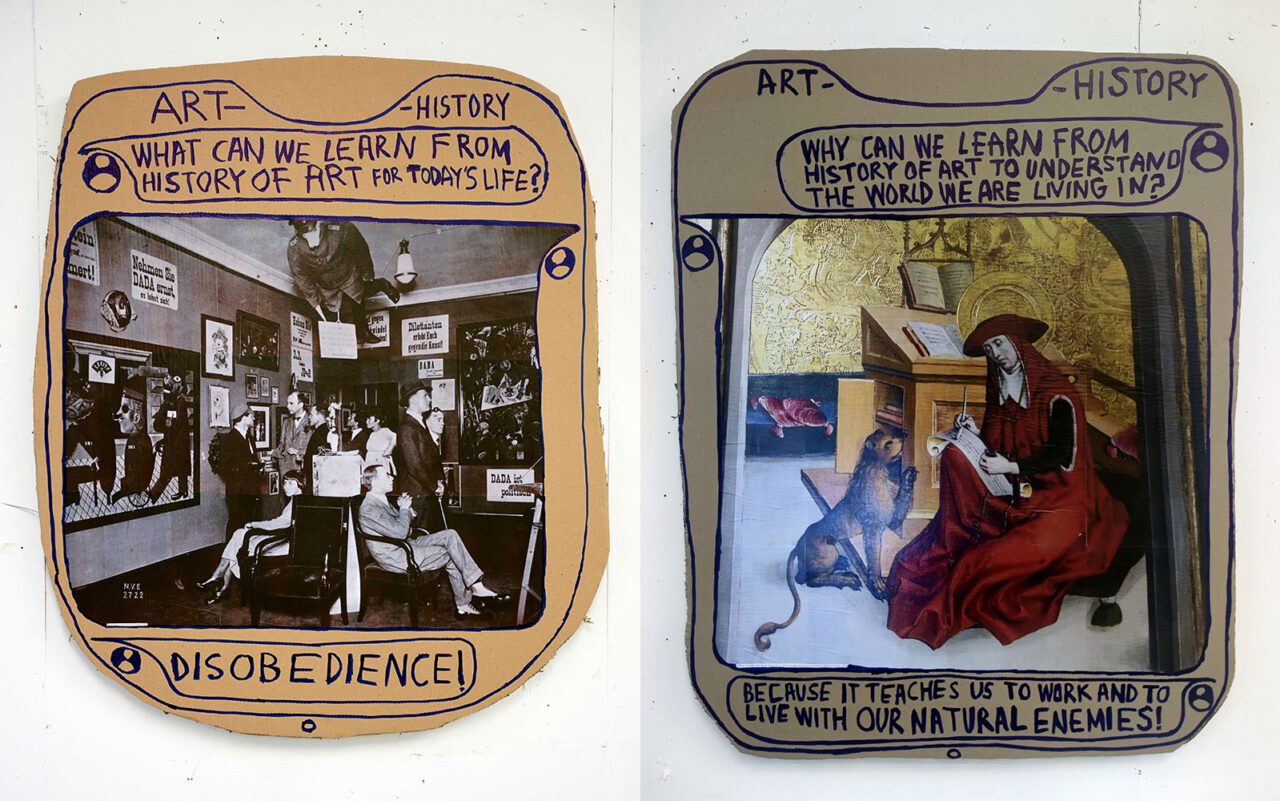PRESENTATION:Thomas Hirschhorn-LAST CHANCE
 The Swiss artist Thomas Hirschhorn rose to prominence in the 1990s for his sculptural installations that combined philosophical theories and mundane, recycled materials to raise questions about consumerism, social responsibility, political discontent, and reality. His huge, immersive, site-specific environments often entail interacting with the local community in both production and enactment.
The Swiss artist Thomas Hirschhorn rose to prominence in the 1990s for his sculptural installations that combined philosophical theories and mundane, recycled materials to raise questions about consumerism, social responsibility, political discontent, and reality. His huge, immersive, site-specific environments often entail interacting with the local community in both production and enactment.
By Efi Michalarou
Photo: Galerie Chantal Crousel Archive
Thomas Hirschhorn in his solo exhibition, “LAST CHANCE: What can we learn from History of Art, for today’s understanding?”, presents a new body of works “Art-History-Plaques”, a continuation of his works inspired by the aesthetics of Instagram posts referring here to Art History and its legacy. It appears—facing contemporary wars in Ukraine, Russia, Palestine, Israel, Lebanon, Iran, among others—that humanity has not been able to learn from history. The daily toll of new deaths, injuries, destruction, and ruin starkly demonstrates the inability or unwillingness to learn and act upon the lessons of the past. Politicians and historians seem either incapable of or disinclined to help society understand the present in a way that could lead to meaningful change. Reflecting on this, the artist asserts that if “Big History”—political, geographical, economic, and cultural history—fails to teach, then society must turn to the History of Art as a last chance. The claim is that the History of Art must be the means to understand today’s world. The History of Art offers the capacity to push minds beyond borders and conventions, fostering connections between seemingly unrelated phenomena. This is the purpose of the work titled “What Can We Learn from the History of Art for Today’s Understanding?”—a demonstration of why the History of Art is a crucial tool for interpreting and acting in the contemporary world. The work is expressed through “Art-History-Plaques”, a series inspired by the “Post”-aesthetic, similar to those the artist has previously shared on Instagram, and by the handcrafted military plaques often used to unofficially honor service and achievements. However, unlike traditional military plaques made from wood and metal, these Art-History-Plaques are crafted from thick layers of cardboard and photocopies. This medium emphasizes a belief in the power of the History of Art to educate and enlighten, deliberately avoiding militaristic intimidation or bourgeois hierarchy. The artist believes in the transformative power of art, which offers a universal and timeless disruption to the habitual and superficial commentary on daily events. This disruption—achieved through art—has the potential to unlock true understanding and learning about current global events, enabling individuals to act decisively and effectively. The thickness and stature of these plaques are intentional, symbolizing the weight and permanence of this belief. The plaques serve as a bridge between the legacy of Art History and the present practice of creating art, acting as enduring reminders of the importance of Art History. The “Art-History-Plaque” positions itself firmly in the present while preparing for the future. It does not simply write or speak about the universal power of art; it demonstrates it—through creation, inclusion, activation, daring, progress, understanding, positioning, imagination, and form-giving. The question posed is whether humanity can seize this last chance to learn and act.
Photo left & Right: Thomas Hirschhorn, © & Courtesy the artist
Info: Galerie Chantal Crousel, 10 rue Charlot, Paris, France, Duration: 23/11/2024-18/1/2025, Days & Hours: Tue-Fri 10:00-20:00, Sat 11:0019:00, www.crousel.com/





